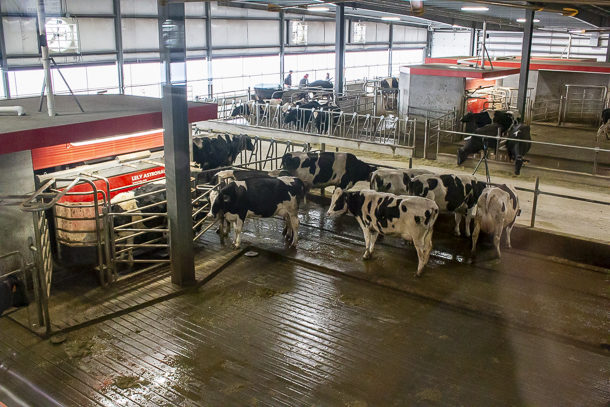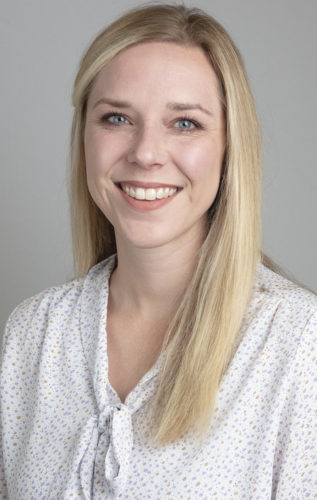There are several factors to consider when upgrading a milking system, particularly if that upgrade goes from a traditional parlor to robots – including cost, feasibility, labor and herd adaptation, among others.
For three Midwest dairy producers, they shared their decision-making process of upgrading to milking robots and the benefits those systems have had on their day-to-day farm management and long-term business goals during the producer panel, “When do robots make sense?” at the 2023 Central Plains Dairy Expo in Sioux Falls, South Dakota.
Demerath Farm became first Nebraska dairy to milk with robots
When Bill Demerath returned to his family’s farm in 2000, he expanded both the herd and milking parlor to accommodate his return and progress with the industry. The Demeraths were posed with the same decision 12 years later as the facilities were wearing and the family wanted to continue growing the herd.By 2017, the Demeraths put up a freestall barn that housed 300 milking cows, as well as transitioned from milking in their longstanding double-8 parallel parlor to four Lely Astronaut A4 robotic milking systems.
“The age of our facilities were becoming a constant conversation for my dad and I,” Demerath said. “It was either go with new facilities or get out of the industry.”
Not only were the facilities wearing, but Demerath’s father was aging and the labor pool for Nebraska’s small dairy industry was not getting any deeper. An automated system alleviated the stress of additional labor and created greater consistency in the milking routine.
Today, Demerath milks 300 cows through those four robots, raises all replacements and runs 800 acres with himself and two employees.
Demerath strives for 60 cows per robot, which has resulted in a production average of 90 pounds of milk per cow per day on 2.8 milkings. Previously in the parlor, the herd was averaging 20 to 23 pounds less.
Additionally, there is about 10% free time on the robots.
“Over the past six years with genetics we’ve been able to pick out those efficient cows and (cull) the bad ones,” Demerath said. “Efficiency plays a big part in what we do. We concentrate on pushing production a little bit each year and we’re seeing that.”
Essential upgrades pushed Honey Creek Dairy to automated milking
Over the last several years, Dan Venteicher and his family noticed parts of their dairy that required essential upgrades – such as milking system equipment and housing facilities.
“At the time, my dad wanted to step back a bit and we needed to upgrade little things to make the farm more efficient while not undergoing a major expansion,” Venteicher said. “We could either hire somebody to take over Dad’s job or put that money toward automation. We had our ears to the ground, and automation was the way to go."
The Venteichers are in year two of milking 200 cows with three Lely Astronaut A5 robotic milking systems and using the Vector feeding system as well.
Automation was incorporated into the facilities using a hybrid retrofit approach, as Venteicher described it. Everything to one side of the barn was built in 1996 and the 2019 addition mirrored those measurements.
“I call it a retrofit because what we had and what we built on were the same,” Venteicher said. “Back in the '90s, my dad and uncle did a good job sizing the barn for cows and with good common-sense thinking. They made things bigger to begin with.”
The addition included about 60 stalls, the three milking robots and kitchen space.
“Overall, our goal was to improve our financial situation,” Venteicher said. “It was a good decision then and it’s a good decision now.”
At Honey Creek Dairy, the milking herd passes through the robots 2.7 times per day with about 67 cows on each robot. The heifers and fresh cows are specifically guided to use only one of the three milking robots and then return to a pen separate from the rest of the herd.
Additionally, the Venteichers allow for about 13% free time on each robot in a day.
“If I start pushing cow numbers, I don’t see free time drop. I just see milk production stay the same,” Venteicher said. “Our goal is to get milk out of the robots and do it affordably.”
Automation is a tried-and-true practice for Richland Dairy
When Andy Meyer returned to his family’s multigeneration dairy, the milking system needed to change. The herd was milked in an 1890 stanchion barn built by Meyer’s great-grandfather.
In 2010, the farm upgraded to two Lely Astronaut A3 milking robots. They then again upgraded to the A5 model in 2018 following a devastating spring tornado that leveled the facilities.
“When we put in our first robots, it was either a parlor or robots,” Meyer said. “At the time, it felt right and we saw enough of them on farms to know it was a comfortable decision for us. And, by the time we’d gone with a parlor and holding area, one robot was already paid for.”
In the stanchion barn, the herd maintained a 70-pound tank average. Today, the herd floats around 105 to 107 pounds per cow per day with energy-corrected milk at 111 to 113 pounds on 2.9 turns. Additionally, the herd runs a somatic cell count (SCC) of about 150,000.
“Those heavy-hitter cows are producing more than 150 pounds and are milking five times per day,” Meyer said. “They don’t get stressed and last longer in the herd.”
The Meyers run their milking robots with about 5% free time.
“I think you want to see about 10 percent to 13 percent free time as a comfortable level,” Meyer said. “But less has worked for us. When we first got robots, we shot for 5,000 pounds of milk per day per robot per year and wanted to slowly work our way up. We’ve had no disappointments following that strategy.”
While there were challenges adjusting the herd to automation, Meyer and his family have enjoyed the flexible lifestyle and consistent management milking robots have provided them for more than a decade.
“A lot of people have done a lot of work with farms installing robots,” Meyer said. “Work with a local dealer and those people. Don’t be a hero and try to figure it out yourself.”







